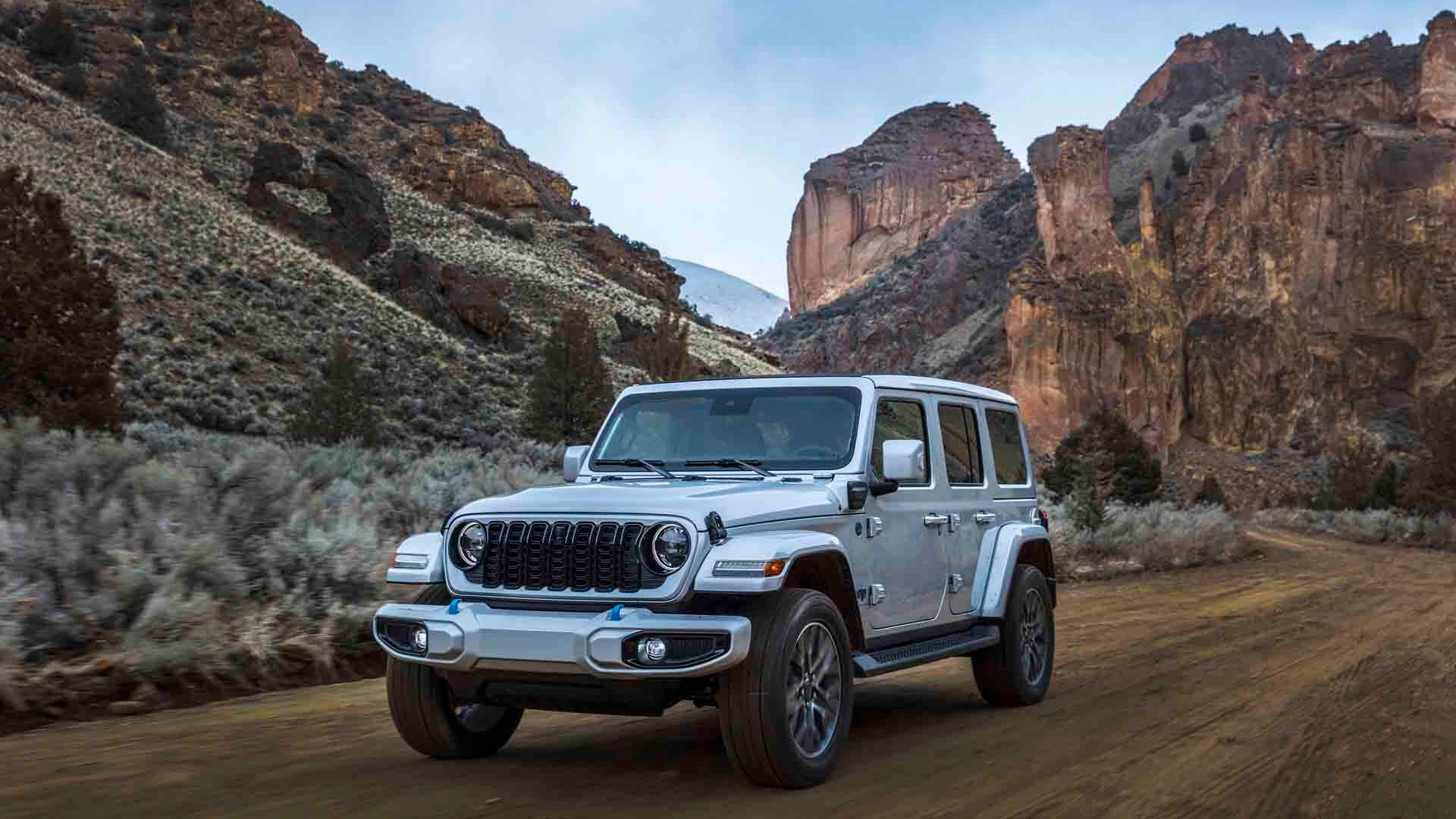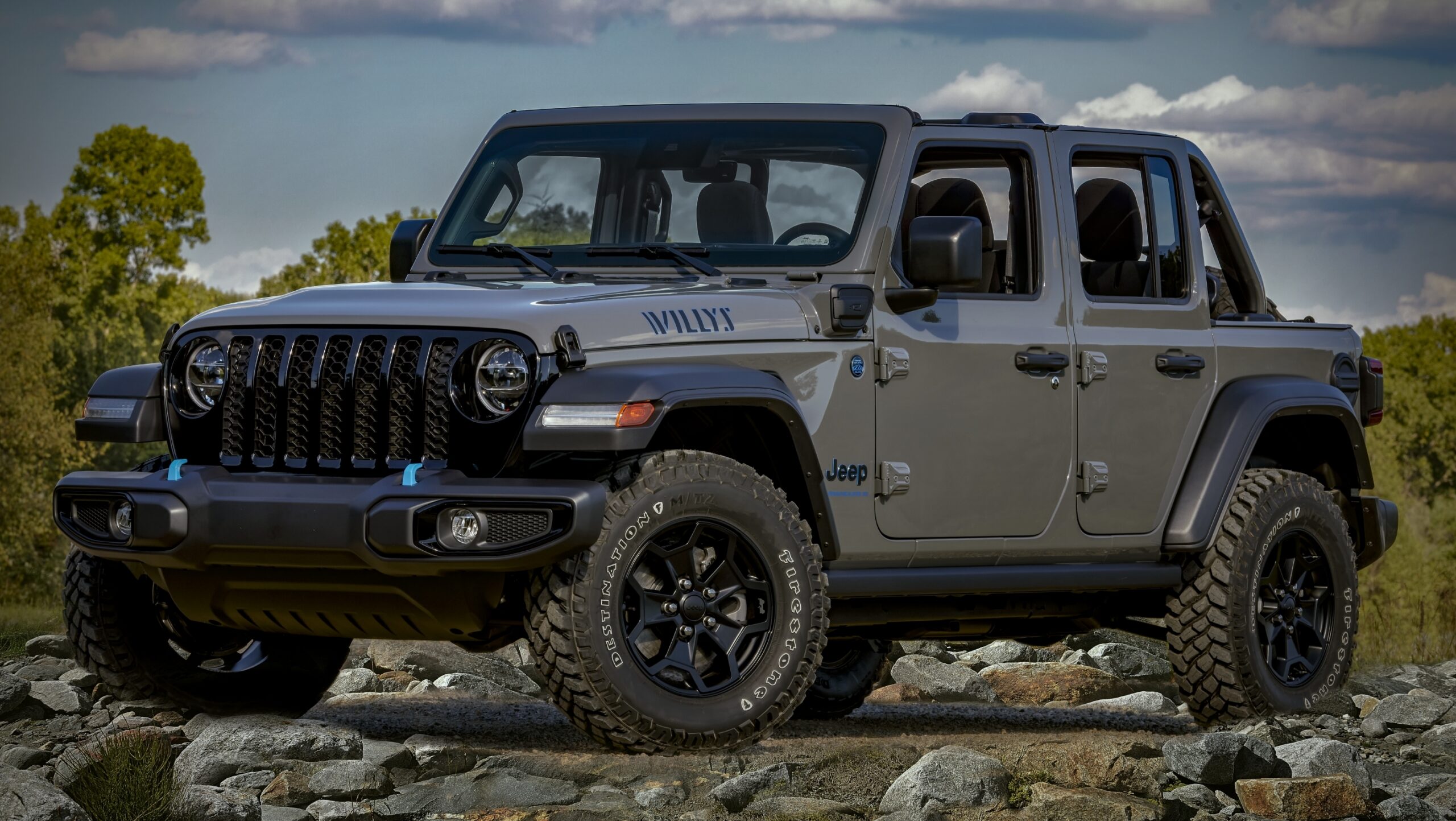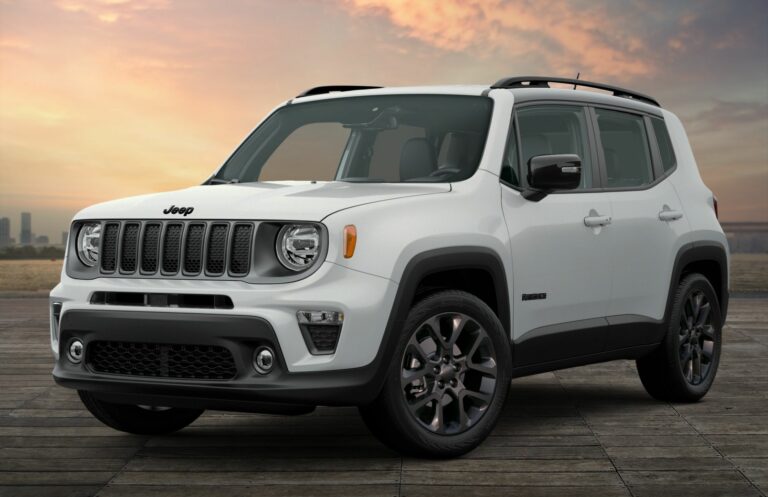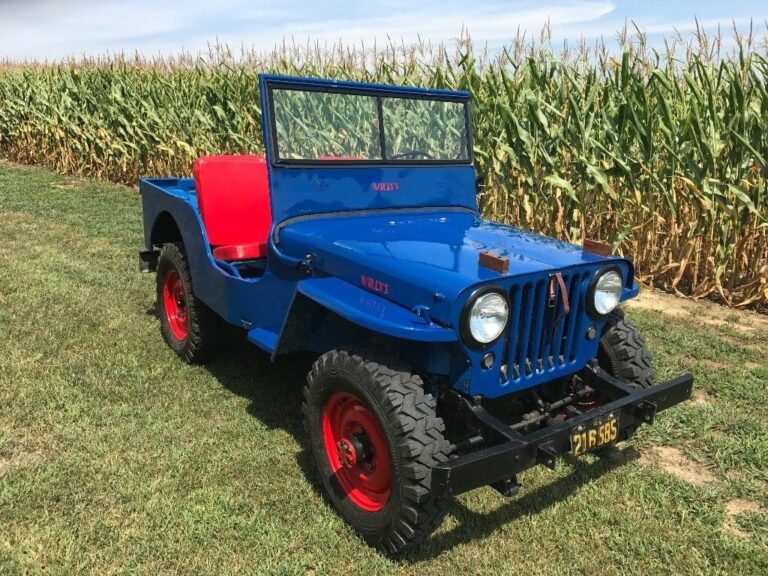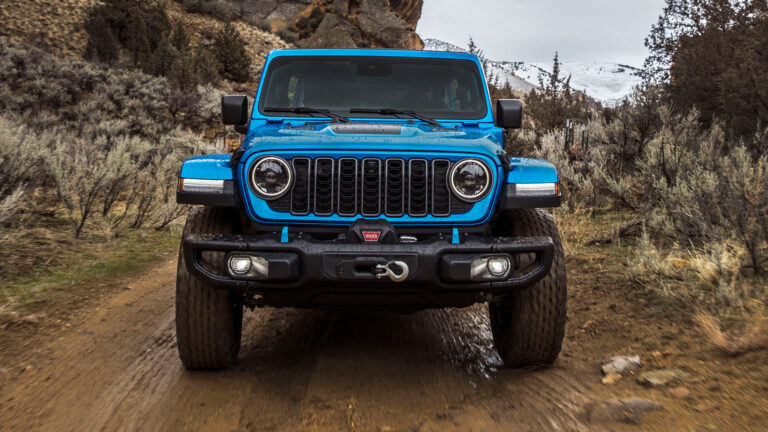Jeep Wrangler 2 Door Lifted: Conquering Trails and Turning Heads
Jeep Wrangler 2 Door Lifted: Conquering Trails and Turning Heads jeeps.truckstrend.com
The Jeep Wrangler is an icon, synonymous with adventure, freedom, and unparalleled off-road capability. While every Wrangler embodies this spirit, the 2-door model holds a special place in the hearts of purists and hardcore off-road enthusiasts alike. Its shorter wheelbase makes it incredibly agile on tight trails, capable of navigating obstacles that would challenge its longer counterparts. Elevating this legendary machine with a lift kit transforms it into an even more formidable beast, enhancing its performance, presence, and overall appeal. A "Jeep Wrangler 2 Door Lifted" isn’t just a vehicle; it’s a statement, a lifestyle, and a highly capable tool for exploring the road less traveled.
Lifting a 2-door Wrangler involves modifying its suspension to increase ground clearance, allowing for larger tires, and improving its articulation for tackling extreme terrain. This article will delve deep into the world of the lifted 2-door Jeep Wrangler, exploring why enthusiasts choose this path, the mechanics involved, essential considerations, and what it truly means to own and operate such a uniquely capable vehicle.
Jeep Wrangler 2 Door Lifted: Conquering Trails and Turning Heads
Why Lift a 2-Door Jeep Wrangler? Unlocking True Potential
The decision to lift a 2-door Jeep Wrangler is driven by a combination of practical benefits and aesthetic desires. While a stock Wrangler is already impressive off-road, a proper lift kit amplifies its capabilities significantly.
- Enhanced Off-Road Capability: This is the primary reason. A lift kit increases ground clearance, allowing the Wrangler to clear larger rocks, logs, and other obstacles without scraping its undercarriage. It also improves approach, departure, and break-over angles, meaning you can tackle steeper inclines and declines without getting stuck or damaging the bumpers and body.
- Accommodating Larger Tires: Lifting the vehicle creates the necessary fender clearance to install bigger, more aggressive tires. Larger tires provide increased traction, a larger contact patch, and often more robust sidewalls, all crucial for navigating challenging off-road conditions like mud, sand, and rocky trails.
- Improved Articulation: A well-designed lift kit, especially those with longer control arms and shocks, allows the suspension to flex more freely. This "articulation" keeps all four wheels on the ground, maintaining traction even when traversing uneven terrain where one or more wheels might otherwise lift off the ground.
- Aesthetic Appeal: Let’s be honest, a lifted Jeep Wrangler simply looks more aggressive and capable. The elevated stance, coupled with larger tires, gives it an undeniable presence that turns heads both on and off the pavement. It embodies the rugged, adventurous spirit that defines the Jeep brand.
- Customization and Personalization: Lifting a Wrangler opens up a world of customization options, allowing owners to tailor their vehicle precisely to their specific needs and preferences, whether for rock crawling, overlanding, or simply a unique daily driver.
![]()
Understanding Lift Kits: The Science Behind the Stance
Lifting a Jeep Wrangler isn’t as simple as just adding taller springs. A comprehensive lift kit addresses various components to maintain proper suspension geometry and drivability.
- Types of Lift Kits:

- Spacer Lifts (Budget Boosts): These are the simplest and most affordable. Urethane or aluminum spacers are placed on top of the factory coil springs, providing a modest lift (typically 1-2.5 inches). They retain the factory ride quality but offer minimal articulation improvement.
- Coil Spring Lifts: These kits replace the factory coil springs with taller, often firmer, aftermarket springs. They usually include new shocks matched to the longer springs. They offer better performance and ride quality than spacers and typically range from 2.5 to 4 inches.
- Short Arm Lifts: Building on coil spring lifts, these kits also replace the factory control arms (upper and lower) with slightly longer ones. This helps correct pinion and caster angles that are altered with higher lifts, improving handling and reducing driveline vibrations. Common for 2.5-3.5 inch lifts.
- Long Arm Lifts: Designed for serious off-roaders and lifts of 4 inches or more, long arm kits relocate the control arm mounting points further back on the frame. This results in much longer control arms, which significantly improve articulation, ride quality, and reduce angle changes throughout the suspension’s travel. They are more complex and expensive.
- Body Lifts: These lifts separate the body from the frame using spacers. They provide clearance for larger tires without altering the suspension geometry, but they don’t increase ground clearance under the axles or differential. Often used in conjunction with a suspension lift for additional tire clearance.
- Key Components of a Lift Kit:
- Coil Springs: Provide the lift height.
- Shocks: Matched to the new spring length to control suspension compression and rebound.
- Control Arms: Link the axle to the frame, controlling fore/aft movement and caster angle. Adjustable control arms are crucial for higher lifts.
- Track Bars: Center the axles under the vehicle. Adjustable track bars are needed to re-center the axle after a lift.
- Sway Bar Links: Extend the factory sway bar links to maintain proper sway bar angle and function. Disconnects are popular for off-road articulation.
- Brake Line Extensions/Replacement: Necessary to prevent stretching or breaking brake lines at full suspension droop.
- Bump Stops: Limit upward suspension travel, preventing tire-to-fender contact and protecting shocks.
Choosing the Right Lift Kit for Your 2-Door Wrangler
Selecting the ideal lift kit requires careful consideration of your intended use, budget, and desired outcomes.
- Intended Use:
- Daily Driver with Light Trails: A 2-2.5 inch spacer or coil spring lift is often sufficient, allowing for 33-inch tires with minimal other modifications.
- Moderate Off-Roading/Overlanding: A 2.5-3.5 inch coil spring or short arm lift offers a great balance of capability and on-road manners. This allows for 33-35 inch tires.
- Serious Rock Crawling/Extreme Trails: A 3.5-4+ inch short arm or long arm lift is necessary, often accompanied by extensive driveline and steering modifications. This allows for 35-37+ inch tires.
- Budget: Lift kits range from a few hundred dollars for simple spacers to several thousand for complete long arm systems. Factor in installation costs, as well as the cost of accompanying upgrades like tires, wheels, and re-gearing.
- Tire Size: The desired tire size largely dictates the lift height needed. Always choose your desired tire size first, then select a lift kit that will clear it with sufficient articulation.
- Existing Modifications: If you already have heavy bumpers, winches, or other accessories, you might need heavier-duty springs to prevent sag.
Specific Consideration for 2-Door vs. 4-Door Wranglers: The shorter wheelbase of the 2-door can make it more sensitive to driveline angles and caster angle changes with higher lifts. While it’s more agile, it can also be more prone to "death wobble" if suspension geometry isn’t properly corrected. Careful attention to control arm length and caster correction is paramount.
The Installation Process: A High-Level Overview
While some mechanically inclined individuals may attempt a lift kit installation themselves, it’s a complex process that often benefits from professional expertise, especially for higher lifts.
- Preparation: Gather all tools, safety equipment (jack stands, wheel chocks), and the lift kit components. Disconnect battery.
- Disassembly: Support the vehicle on jack stands, remove wheels, disconnect shocks, sway bar links, track bars, and control arms. Carefully lower the axles to remove old coil springs.
- Component Installation: Install new coil springs, shocks, control arms, extended sway bar links, and track bars according to the manufacturer’s instructions.
- Torquing: Crucially, all bolts must be torqued to specification with the vehicle at ride height to prevent bushing bind and ensure proper suspension movement.
- Alignment: A professional alignment is mandatory after any suspension modification. This corrects caster, camber, and toe angles for proper handling and tire wear.
- Post-Installation Checks: Double-check all fasteners, test brake lines, and ensure no components are binding. Drive slowly at first to listen for any unusual noises.
Essential Companion Upgrades for a Lifted 2-Door Wrangler
Lifting your Wrangler is just the first step. To truly optimize its performance and reliability, several other upgrades are highly recommended or even necessary.
- Larger Tires and Aftermarket Wheels: Larger tires are the primary reason for a lift. Aftermarket wheels are often required for proper backspacing to prevent tire rubbing on suspension components.
- Re-gearing (Axle Gears): When installing significantly larger tires (e.g., 35 inches or more), the engine will struggle to turn them, especially on hills or off-road. Re-gearing the axles to a lower ratio (higher numerical value, e.g., from 3.73 to 4.56 or 4.88) restores power, improves acceleration, and reduces strain on the drivetrain. This is a critical but often overlooked upgrade.
- Heavy-Duty Driveshafts: With higher lifts and increased articulation, the factory driveshafts, particularly the front, can operate at extreme angles, leading to premature wear or failure. Aftermarket driveshafts with stronger U-joints and better operating angles are a wise investment.
- Steering Components: A lifted Jeep can experience "bump steer" or "death wobble" due to altered steering geometry. Upgrading to a heavy-duty steering attenuator, tie rod, drag link, and possibly a stronger steering box can greatly improve stability.
- Braking Upgrades: Larger tires increase rotational mass, putting more strain on the factory brakes. Upgrading to larger rotors, calipers, or more aggressive pads can significantly improve stopping power.
- Fender Flares: Flat or high-clearance fender flares can provide additional tire clearance without requiring excessive lift, especially for larger tires.
Important Considerations and Potential Challenges
While the benefits are numerous, lifting a Jeep Wrangler also introduces new considerations and potential challenges.
- Legality: Lift laws vary by state/country. Always check local regulations regarding maximum lift height and tire size.
- Warranty: Major suspension modifications can void parts of your vehicle’s factory warranty related to the drivetrain and suspension.
- Handling Changes: A lifted vehicle will have a higher center of gravity, affecting on-road handling, especially at highway speeds or during sudden maneuvers. Expect more body roll and a potentially stiffer ride.
- Fuel Economy: Larger tires and a less aerodynamic profile will inevitably lead to decreased fuel efficiency. Re-gearing can help mitigate some of this loss.
- Maintenance: More complex suspension components may require more frequent inspection and maintenance.
- Driveline Angles: As mentioned, improper driveline angles can lead to vibrations and premature wear of U-joints and driveshafts. Proper correction is essential.
- Death Wobble: This violent, uncontrollable shaking of the front end is a common concern for lifted Jeeps. It’s usually caused by loose or worn steering/suspension components or improper geometry. Addressing it promptly is crucial for safety.
Maximizing Your Lifted 2-Door Wrangler’s Performance
Owning a lifted 2-door Wrangler is about more than just looking cool; it’s about pushing boundaries.
- Learn Off-Road Techniques: Understand how to properly use your vehicle’s capabilities. Learn about tire pressure for off-roading, spotting lines, and recovery techniques.
- Regular Maintenance: Keep an eye on all suspension and steering components. Bushings wear, bolts loosen, and alignment can shift over time, especially with hard off-road use.
- Know Your Limits: While your lifted Wrangler is incredibly capable, it’s not invincible. Understand its limitations and your own driving skills to prevent damage or dangerous situations.
- Join a Community: Connect with other Jeep owners. They can be invaluable resources for advice, trail recommendations, and shared experiences.
Estimated Costs for a Jeep Wrangler 2 Door Lifted
It’s crucial to understand that prices for lift kits and associated upgrades vary wildly based on brand, quality, specific components included, and where you purchase them. The following table provides estimated ranges to give you a general idea of the investment involved. These prices do not include taxes or shipping.
| Component/Service | Estimated Price Range (USD) | Notes |
|---|---|---|
| Lift Kits (Components Only) | ||
| 1-2.5" Spacer Lift | $200 – $600 | Basic, retains factory ride, minimal performance gains. |
| 2.5-3.5" Coil Spring Lift | $500 – $1,500 | Good balance of cost and performance, often includes new shocks and basic corrections. |
| 3.5-4.5" Short Arm Lift | $1,500 – $3,500 | More comprehensive, includes control arms, track bars, and specific shocks. Better for serious off-roading. |
| 4"+ Long Arm Lift | $3,500 – $8,000+ | High-performance, complex installation, superior articulation and ride quality for extreme use. |
| Body Lift (1-2") | $150 – $400 | Used for tire clearance, no suspension benefit. Often combined with suspension lifts. |
| Installation Costs (Labor) | ||
| Simple Spacer Lift | $300 – $600 | Less labor-intensive. |
| Coil Spring/Short Arm Lift | $600 – $1,500 | Requires more disassembly and reassembly. |
| Long Arm Lift | $1,500 – $3,000+ | Complex, often involves welding and frame modification. Highly recommended professional installation. |
| Essential Companion Upgrades | ||
| 5x Large Off-Road Tires | $1,200 – $3,000+ | Price varies greatly by size, brand, and type (mud-terrain, all-terrain). Includes spare. |
| 5x Aftermarket Wheels | $600 – $1,500+ | Price varies by material (steel vs. alloy), brand, and design. Includes spare. |
| Re-gearing (Front & Rear Axles) | $1,500 – $3,000+ | Labor-intensive. Includes new ring and pinion gears, bearings, and professional installation. Crucial for larger tires. |
| Driveshafts (Front & Rear) | $800 – $1,500+ (per shaft) | Recommended for 3.5"+ lifts, especially for off-roading, to prevent binding and wear. |
| Professional Alignment | $100 – $250 | Absolutely essential after any suspension modification. |
| Other Potential Upgrades | ||
| Heavy-Duty Steering Components | $300 – $1,000+ | Tie rod, drag link, steering stabilizer. Highly recommended to prevent death wobble. |
| Big Brake Kit | $800 – $2,000+ | For improved stopping power with larger, heavier tires. |
| Flat/High-Clearance Flares | $200 – $800 | Provides additional tire clearance without more lift. |
Note: These are estimates. Always get multiple quotes for parts and labor from reputable shops.
Frequently Asked Questions (FAQ)
Q: How much lift do I really need for my 2-door Wrangler?
A: It depends on your desired tire size and intended use. For 33-inch tires, 2-2.5 inches of lift is usually sufficient. For 35-inch tires, 2.5-3.5 inches is common. For 37-inch+ tires, 4+ inches of lift with significant other modifications is typically required.
Q: What’s the biggest tire size I can run on a stock 2-door Wrangler?
A: Generally, 31-32 inch tires can fit with minor rubbing on full turns or articulation. Anything larger will require a lift.
Q: Will lifting my 2-door Wrangler affect its daily driving manners?
A: Yes. You can expect a higher center of gravity, which may lead to more body roll, and a potentially firmer or bouncier ride depending on the kit. Proper alignment and quality components can minimize negative effects.
Q: Do I need to re-gear my axles after lifting and installing bigger tires?
A: For significant tire size increases (e.g., from 30" to 35"), re-gearing is highly recommended. It restores lost power, improves fuel economy (relative to not re-gearing), reduces strain on the engine and transmission, and makes the vehicle much more enjoyable to drive both on and off-road.
Q: What is "death wobble" and how do I prevent it?
A: Death wobble is a violent, uncontrollable oscillation of the front wheels, usually triggered by hitting a bump at speed. It’s often caused by worn steering or suspension components (track bar, tie rod ends, ball joints) or incorrect caster angle after a lift. Preventing it involves using quality lift components, ensuring all steering and suspension parts are in good condition, and maintaining proper alignment.
Q: Can I install a lift kit myself?
A: A simple spacer lift might be manageable for someone with mechanical experience and proper tools. However, more complex coil spring, short arm, or long arm kits involve intricate suspension geometry, torque specifications, and safety considerations. Professional installation is highly recommended to ensure safety, proper performance, and to avoid costly mistakes.
Q: Will lifting my Wrangler void its warranty?
A: Modifying your vehicle’s suspension can potentially void the portion of your factory warranty related to the suspension, steering, and potentially the drivetrain, especially if the dealership can prove the modification directly caused a failure. It’s best to discuss this with your dealership before proceeding.
Conclusion
The lifted 2-door Jeep Wrangler is more than just a vehicle; it’s a testament to personal freedom and the pursuit of adventure. Its compact footprint combined with enhanced ground clearance and articulation makes it an incredibly capable machine on the most challenging trails, while its imposing stance ensures it stands out wherever it goes.
While the journey to a lifted Wrangler involves careful planning, significant investment, and an understanding of the mechanical implications, the rewards are immense. The ability to conquer new trails, experience unparalleled off-road performance, and own a truly unique and personalized vehicle makes it a deeply satisfying endeavor for countless enthusiasts. Whether you’re navigating rocky terrain, traversing muddy paths, or simply cruising down the highway, a properly lifted 2-door Jeep Wrangler offers an unmatched blend of capability, iconic style, and pure driving exhilaration. It’s not just about getting from point A to point B; it’s about the adventure in between.
